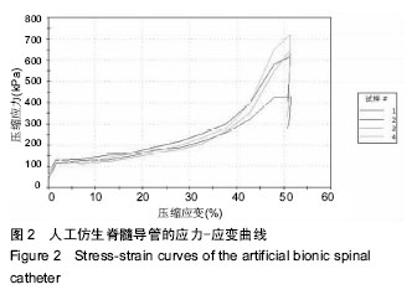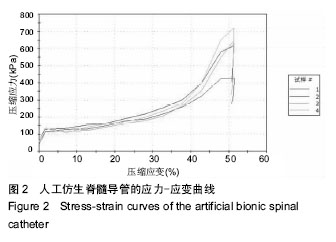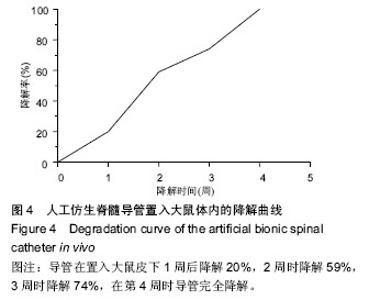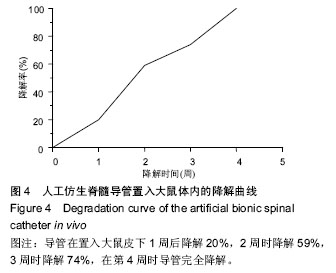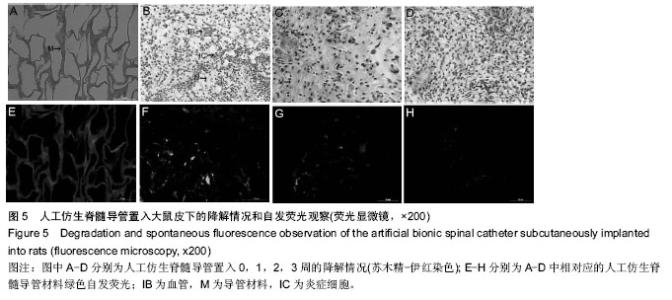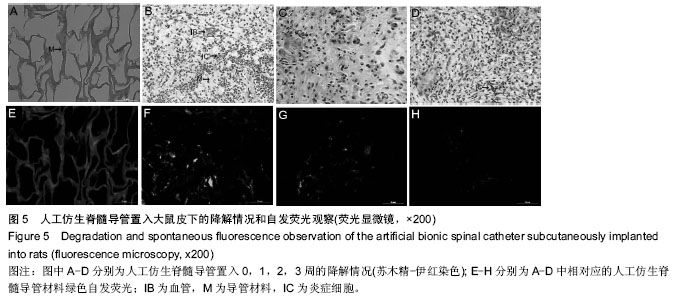| [1] Lu P,Wang Y,Graham L,et al.Long-distance growth and connectivity of neural stem cells after severe spinal cord injury.Cell.2012;150:1264-1273.[2] Li C,Zhang X,Cao R,et al.Allografts of the acellular sciatic nerve and brain-derived neurotrophic factor repair spinal cord injury in adult rats. PloS one. 7:e42813.[3] Singh A,Tetreault L,Kalsi-Ryan S,et al.Global prevalence and in cidence of traumatic spinal cord injury.Clin Epidemiol.2014;6:309-331.[4] Sharp KG,Dickson AR,Marchenko SA,et al.Salmon fibrin treatment of spinal cord injury promotes functional recovery and density of serotonergic innervation.Exp Neurol. 2012;235:345-356.[5] Friedman JA,Windebank AJ,Moore MJ,et al. Biodegradable polymer grafts for surgical repair of the injured spinal cord.Neurosurgery.2002;51:742-751.[6] Peterson SL Anderson AJ.Complement and spinal cord injury: traditional and non-traditional aspects of complement cascade function in the injured spinal cord microenvironment.Exp Neurol.2014;258:35-47.[7] Madigan NN,McMahon S,O'Brien T,et al.Current tissue engineering and novel therapeutic approaches to axonal regeneration following spinal cord injury using polymer scaffolds.Respir Physiol Neurobiol. 2009;169: 183-199.[8] Madigan NN,McMahon S,O'Brien T,et al.Current tissue engineering and novel therapeutic approaches to axonal regeneration following spinal cord injury using polymer scaffolds.Respir Physiol Neurobiol. 2009; 169(2): 183-199.[9] Walker PA,Aroom KR,Jimenez F,et al.Advances in progenitor cell therapy using scaffolding constructs for central nervous system injury.Stem Cell Rev. 2009;5: 283-300.[10] Madihally SV,Matthew HW.Porous chitosan scaffolds for tissue engineering. Biomaterials. 1999;20(12): 1133-1142.[11] Kaneko A,Matsushita A,Sankai Y.A 3D nanofibrous hydrogel and collagen sponge scaffold promotes locomotor functional recovery, spinal repair,and neuronal regeneration after complete transection of the spinal cord in adult rats. Biomed Mater. 2015;10:015008.[12] Han Q,Jin W,Xiao Z,et al.The promotion of neural regeneration in an extreme rat spinal cord injury model using a collagen scaffold containing a collagen binding neuroprotective protein and an egfr neutralizing antibody. Biomaterials.2010;31:9212-9220.[13] Han S,Wang B,Jin W,et al.The linear-ordered collagen scaffold-BDNF complex significantly promotes functional recovery after completely transected spinal cord injury in canine.Biomaterials.2015;41:89-96.[14] Shen W,Chen X,Hu Y,et al.Long-term effects of knitted silk-collagen sponge scaffold on anterior cruciate ligament reconstruction and osteoarthritis prevention. Biomaterials.2014;35:8154-8163.[15] Chen JL,Yin Z,Shen WL,et al.Efficacy of hESC-MSCs in knitted silk-collagen scaffold for tendon tissue engineering and their roles.Biomaterials. 2010;31: 9438-9451.[16] Sun K,Li H,Li R,et al.Silk fibroin/collagen and silk fibroin/chitosan blended three-dimensional scaffolds for tissue engineering.Eur J Orthop Surg Traumatol. 2015;25(2):243-249.[17] Chen X,Qi YY,Wang LL,et al.Ligament regeneration using a knitted silk scaffold combined with collagen matrix.Biomaterials.2008;29:3683-3692.[18] 吴刚,董长超,王光林,等.PLGA-丝素-胶原纳米三维多孔导管材料的制备及细胞相容性研究[J].中国修复重建外科杂志,2009,23(8):1007-1011.[19] Banani K,Rangam R,Subhas C.Silk fibroin biomaterials for tissue regenerations. Adv Drug Deliv Rev.2013;65:457-470.[20] Engler AJ,Sen S,Sweeney HL,et al.Matrix elasticity directs stem cell lineage specifi- cation.Cell.2006; 25:677-689. |


